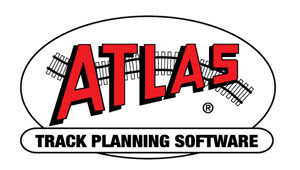Why
do these CVs even exist!?!? Well, there are two necessary, relevant reasons for
them. First, assume you have multiple decoders in the same locomotive or rolling
stock car (remember Cody Grivno’s runaway boxcar?) and they all have the same
DCC address, one for the motor, one for lights, etc? In this case, if you
change a CV in one, you guessed it; the CV in ALL of them gets changed.
The
second reason is to prevent electrical shorts from scrambling a decoder. This has
happened to the author more than once and from discussions on the forums, many
other individuals.
A
good analogy to get a basic understanding of the relationship between these two
CVs is to think of CV 16 as a lock and CV 15 as the key to lock/unlock it.
Programming CV 15 to the same value as what is in CV 16 allows the decoder to
me programmed as you see fit. If the values are different then the decoder is
“locked”. There are some minor differences between decoder manufacturers of
what can be modified (and, in the case of Soundtraxx, what extras need to be
done to enable locking) and we will discuss what those differences are below.
NMRA Standard Explanation
Located
starting at line #150 here:
Configuration
Variables 15, 16: Decoder Lock The Decoder Lock is used to change CVs in
only one of several decoders with the same short address (CV1) or long address
(CV17 and CV18) that are installed in the same locomotive (Author’s addition: or motorized rolling stock with lights,
etc.). Assign a number to CV16 in each decoder (i.e., 1 to motor decoder, 2 to
sound decoder, 3 or higher to other decoders) before the decoders are installed in the locomotive (author’s emphasis). To change a value in another CV of one of
the installed decoders, first write the number 1 (motor), 2 (sound), or 3 or
higher (other) into CV15, then send the new value to the CV to be changed. The
decoders will compare CV15 to CV16 and, if the values are equal, the CV to be
changed will be changed. If the values in CV15 and CV16 are different, the
update will be ignored.
Note: Although not
specifically stated, legal values for CV16 are limited to 0 to 7.
The
key takeaway here is to decide on a numbering scheme for the decoders in your
multiple decoder equipped entities and to document
what you have them programmed to. Without that you will be lost, confused
and frustrated in no time.
Now
let’s talk about the decoder manufacturer’s differences and similarities.
Digitrax
Digitrax
follows the NMRA standard. They discuss the CVs in their Decoder Manual V2 here starting on page
66.
BLI and TCS
Both
of these manufacturers follow the NMRA standard per their manuals. BLI manuals are located here .
BLI
also states
“Please
note once the decoder is locked, no CV’s other than CV1 or CV15 may be read or
changed.”
The
TCS Comprehensive Programming Guide can be downloaded here.
Soundtraxx
The
NMRA standard is followed by Soundtraxx with one addition summarized by a note
attached to both CV 15 and 16 in their Technical Reference manuals here.
Note:
Bit 0 (CV Lock Enable) of CV 30 (Error Information) must be set to 1 in order
for the lock feature in CVs 15 and 16 to be used
ESU
V5
The
version 5 ESU manual states that they follow the NMRA standard. There is no
mention of differences between the V5 DCC and V5 European decoders nor is there
a discussion of how to implement locking so the author tested one of his v5
decoders (this was not a thorough test). Setting CV 16 to a value of 7 and CV
15 to a value other than 7 prevented any changes to other CVs. As soon as CV 15
was set to 7, other CVs could be changed. The author has no multi-decoder
pieces to test.
V4
The
version 4 (unofficial) manual here makes no mention of CV15 or CV16 specifically so the author cannot say anything
about these. (the author has no V4
decoders, DCC or European). Also, there may be differences between the
decoders designed for Europe and their counterpart DCC decoders designed for
North America and Australia. If anyone tests this or knows for sure please
leave a comment and I’ll update this post.
Additional Specific Decoder Findings - thanks to Mark Granville
Decoders Without Locking Features
- Atlas Dual Mode version4
- Digitrax DH150, DH165, DN140.
- This is consistent with the instructions & manuals not listing CVs 15 & 16
- Interestingly, you can read and write these CVs in the DH165 but they have no effect
- ESU LokSound Select with firmware 4.17.9249
- You can read and write CVs 15 & 16 but they have no effect
Locking Specifics
- Broadway Limited Paragon 2
- CV16=0 results in no lock regardless of CV15 value
- Will only take values 0-7. If you write a value >7, you get 0 when reading back the CV
- You can read any CV when decoder is locked but cannot write any CV except CV15
- ESU LokSound 5 DCC with firmware 5.6.143
- CV16=0 does NOT unlock the decoder regardless of CV15
- Only CV15=CV16 unlocks decoder
- Values from 0-255 work
- You cannot read or write CVs when locked except CV15
- NCE D14SR and DA-SR both with firmware version 3.5
- CV16=0 does NOT unlock the decoder regardless of CV15
- Only CV15=CV16 unlocks
- Values from 0-255 work
- You cannot read or write CVs when locked except CV15.
The author hopes this information will help model railroaders implement decoder locking when they feel it may be necessary.
If you have an idea for a blog post here, let me know. If I can comment on it, I will or I'll see if someone else can and post it

